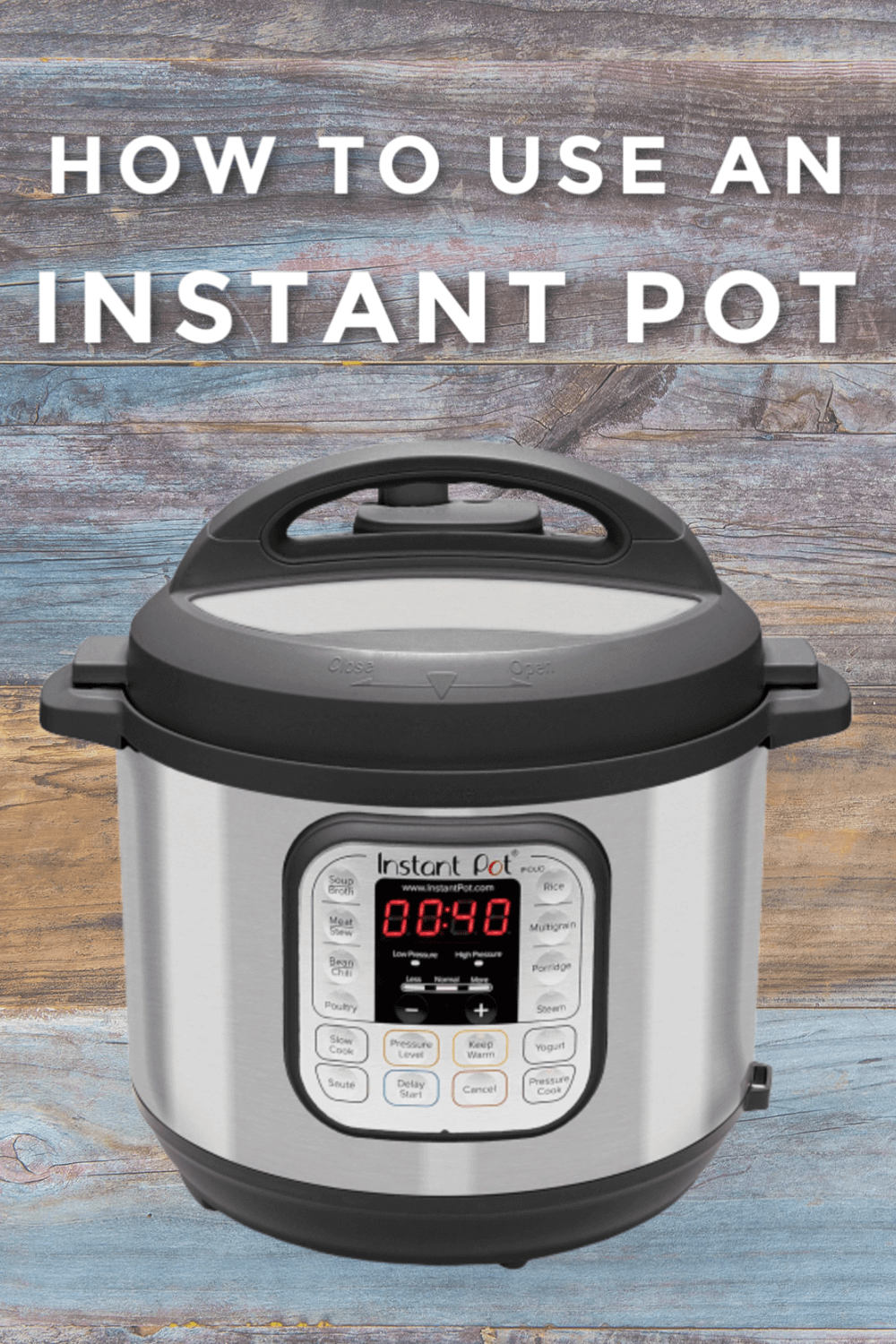 Instant Pot is the end-all-be-all of small kitchen appliances, and a perfect amalgamation of slow cookers, pressure cookers, and a number of other crafty countertop devices. You can roast beans, steam veggies, braise meats, and more, all in a fraction of the time it would normally take you to cook these foods in the oven. The Instant Pot is a recipe champion, but, until you know how to use it, veteran cooks and newbs alike are all on equal footing.
Instant Pot is the end-all-be-all of small kitchen appliances, and a perfect amalgamation of slow cookers, pressure cookers, and a number of other crafty countertop devices. You can roast beans, steam veggies, braise meats, and more, all in a fraction of the time it would normally take you to cook these foods in the oven. The Instant Pot is a recipe champion, but, until you know how to use it, veteran cooks and newbs alike are all on equal footing.Check out our easy-to-follow instructions, tips, and tricks for using your brand new Instant Pot.
What is pressure cooking?
The primary function of most Instant Pot models is pressure cooking. The pressure is what allows the Instant Pot to be such a versatile cooking appliance. But what exactly is pressure cooking? It’s a food-preparation method that seals the food inside a vessel with liquid, using heat to create steam, which increases the pressure in the vessel.The appliance then traps or releases steam to control the level of pressure. With more pressure, the boiling point of the liquid rises, and the food cooks faster at a higher temperature. Pressure cooking retains the flavors and nutrients of your food while also creating moist and delicious results and saving energy in the process.
How do I use the settings?
The front of your Instant Pot can look pretty complicated, with all the different buttons denoting various programs. But once you understand what all the buttons mean, it’s pretty straightforward. Basically, each button refers to a different cooking method and has a preset cook time and pressure setting to make things more user-friendly.| BUTTON | PRESSURE SETTING | COOK TIME |
| Slow Cook | Normal | 4 hours |
| Pressure | Low or high | Manual |
| Soup | High | 30 minutes |
| Meat/Stew | High | 35 minutes |
| Bean/Chili | High | 30 minutes |
| Poultry | High | 15 minutes |
| Rice | Low or High | Auto |
| Multigrain | High | 40 minutes |
| Porridge | High | 20 minutes |
| Steam | High | 10 minutes |
| Yogurt | 3 programs | Manual |
| Saute | N/A | Manual |
| Manual | Defaults to high (can be adjusted) | Manual |
| Adjust | N/A | N/A |
| Timer | N/A | Manual |
| Keep Warm/Cancel | N/A | N/A |
As for cook times, some recipes come with preset times, while others require you to manually input how long you want the cooking process to be. The “Keep Warm” setting will automatically turn on when cooking is done.
Some Instant Pot models have additional features and functions as well. For Instance, the Instant Pot Duo SV has a sous vide cooking program, and the Instant Pot Duo Crisp has an air frying function.
How to release pressure
There are two ways to safely release pressure from the Instant Pot: The natural release method and the quick-release method. Some models perform these functions automatically, and other models have pulse release, but quick and natural release are the most common release methods.Natural release lets the pressure slowly dissipate on its own, depressurizing as heat gets released from the lid. Depressurization can take between 10 and 30 minutes, depending on how much liquid is in the cooking pot. Recipes with more liquid will take longer to depressurize than dishes with less. The natural release method lets food stay intact during the depressurization process, as there is less movement within the appliance. Foamy foods or dishes with lots of liquid are best left to the natural release method. According to Instant Pot, to speed up the process, you can place a cold towel on the metal portion of the lid to help the appliance cool down faster.

Please note it is crucial to wait until all the steam has been released from the Instant Pot before taking off the lid. Never try to force the lid open before depressurization is complete, as this can be very dangerous. Instant Pots have safety locks in place to help prevent you from removing the lid too soon though.
How to clean an Instant Pot
Maintaining an Instant Pot is relatively easy when compared to other kitchen appliances. For daily clean-up, all you have to do is wash the insert, clean the lid, rinse the sealing ring, and wipe down the exterior housing unit. If your Instant Pot isn’t getting a proper seal during cooking, it might be time to give it a deeper clean.Remove the silicone sealing ring to ensure it is free of residue. Other small parts, such as the steam release handle, anti-block shield, or float valve can get sticky over time too, so give them a good once-over to remove any stubborn residue or food particles that may be lingering. While you’re at it, be sure to check the recess around the pot, as well as the spoon rest, for any grime that may have gotten caught.
Shop Instant Pot on Amazon
Editors' Recommendations
from Fruitty Blog https://ift.tt/39mxUs6
via IFTTT
No comments:
Post a Comment